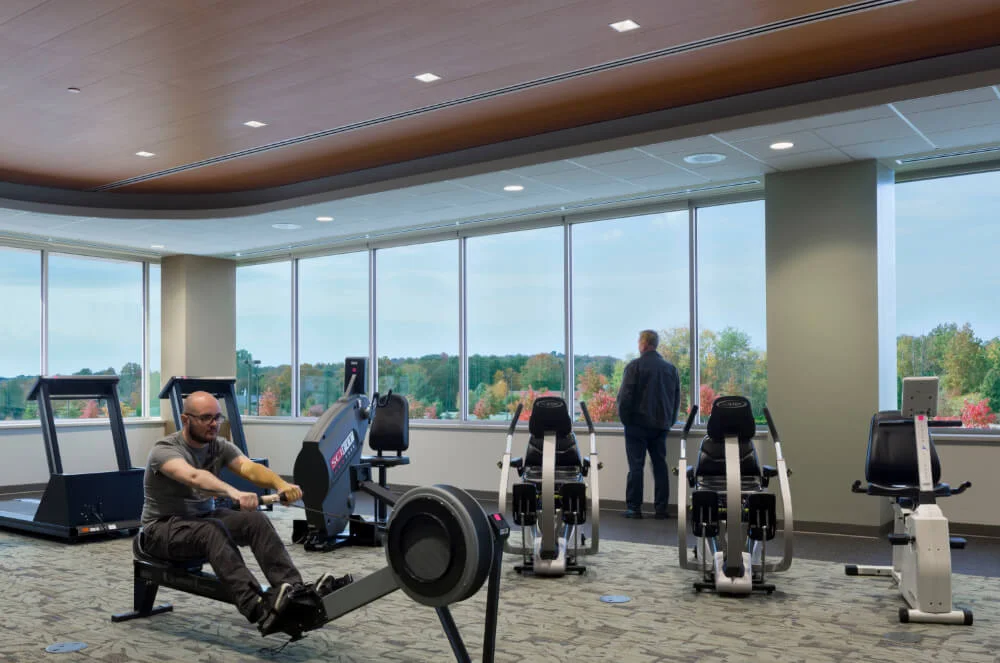Cardiothoracic Surgeries
The list of life-saving procedures performed by expert surgeons.
Find a Cardiologist
Through our specialized and advanced care teams, and our new state-of-the-art operating rooms, we give our local community access to cardiothoracic surgery procedures that don't require patients to travel to New York City. Below is a list of cardiothoracic surgeries available:
Cardiothoracic Surgeries Offered
Your aortic valve is one of four valves that control the flow of blood in the heart.
When your heart contracts, the aortic valve opens and lets blood flow from the left ventricle into the aorta. When the heart relaxes, the aortic valve closes to prevent blood from moving backward.
An aortic valve that is damaged or diseased can force the heart to work harder to pump blood to the rest of the body.
The AVR procedure involves the replacement of a damaged heart value with a mechanical valve, a tissue valve or your own valve (the Ross procedure). This can improve blood flow, reduce symptoms of heart valve disease and prolong life.
A heart attack occurs when the arteries feeding oxygen to the heart are blocked.
Coronary artery bypass grafting (CABG) is an operation where an artery or vein from another part of the body is used to reroute blood flow around the blockage.
Surgeons use chest wall arteries (known as internal mammary arteries) and segments of the patient’s own veins to construct new pathways for blood and oxygen to reach the heart. The veins used for this reconstruction are usually taken from the patient’s legs, using a minimally invasive technique that leaves only a few tiny incisions.
By restoring blood flow to the heart, CABG can relieve symptoms and potentially prevent a heart attack. Coronary bypass operations are performed half a million times a year with an overall success rate of almost 98 percent.
Heart tumors are abnormal growths of tissue in the heart, and may be classified as either cancerous (malignant) or non-cancerous (benign). These tumors, even benign ones, can increase the risk of stroke or obstruction of blood flow as they grow. Once identified, heart tumors are usually removed surgically.
The left atrial appendage (LAA) is a pouchlike extension of the left atrium of the heart. During atrial fibrillation (AF), blood can pool and form clots in the LAA. If a clot breaks loose, it may travel through blood vessels and eventually plug a smaller vessel in the brain or heart, causing a stroke.
LAA ligation is a procedure used to reduce the risk of a stroke in patients with AF. During this procedure, the LAA is sealed off from the rest of the heart. This prevents blood from circulating through and pooling in the LAA and causing clots, potentially decreasing the risk of a stroke.
Atrial fibrillation (AF) is the most common form of arrhythmia, or irregular heartbeat, in which the two small upper chambers of the heart (the atria) quiver instead of beating effectively.
The maze procedure is a surgical treatment for atrial fibrillation that interrupts the electrical impulses that cause an abnormal heart rhythm. The surgery typically involves the placement of incisions in both atria; however, it can be modified to suit a patient’s condition. Scar tissue forms when the incisions heal, and this scar tissue prevents abnormal electrical impulses from passing through the heart. This technique is highly effective in curing AF.
A damaged mitral valve prevents blood from correctly flowing through the heart.
The two triangular-shaped flaps, or leaflets, of the mitral valve may not close correctly, causing blood to leak backward (mitral valve regurgitation), or the valve leaflets may become thick or stiff, and they may fuse together (mitral valve stenosis). This causes the valve to narrow and reduces blood flow through the area.
MVR surgery removes the damaged mitral valve, and replaces it with a mechanical valve, or biological tissue valve.
A damaged mitral valve prevents blood from correctly flowing through the heart.
The two triangular-shaped flaps or leaflets of the mitral valve may not close correctly causing blood to leak backward (Mitral valve regurgitation), or the valve leaflets may become thick or stiff, and they may fuse together (Mitral valve stenosis). This causes the valve to become narrowed and reduces blood flow through the area.
Mitral valve repair surgery fixes a damaged mitral valve without removing it. Mitral valve repair may be done to avoid complications that can occur with mitral valve replacement, such as blood clots due to mechanical valves and biological tissue valve failure.
Your cardiac surgeon can modify the original valve (valvuloplasty) to eliminate backward blood flow. Surgeons can also repair the valve by reconnecting valve leaflets or by removing excess valve tissue so that the leaflets can close tightly. Sometimes repairing the valve includes tightening or replacing the ring around the valve (annulus). This is called an annuloplasty.
The advantages of mitral valve repair include better early and late survival, an improved lifestyle, better preservation of heart function, lower risk of stroke and infection (endocarditis), and no need for blood thinners (anticoagulation).
The aorta is your body’s main blood vessel, starting at your heart and extending all the way to your pelvis, where it branches toward your legs. A thoracic aortic aneurysm (TAA) is an expansion, or ballooning, of a section of the aorta within your chest (thorax) that slowly degenerates. The larger the aneurysm, the higher the risk it may rupture, leading to damage of the aortic wall and bleeding that could cause death.
A patient with a TAA may require a surgical aneurysm repair. During this procedure, a surgeon replaces the weakened portion of the aorta with a fabric tube, called a graft. Patients who have a TAA may also have heart disease or other complexities that could require heart surgery at the same time as the aneurysm repair.

Heart Conditions We Treat
From the moment a diagnosis is confirmed, the cardiovascular specialists at Garnet Health will develop a personalized treatment plan for you.
Learn more
Cardiac Rehabilitation
Cardiac rehabilitation is specialized, medically supervised support for people who have experienced heart-related conditions.
Learn more